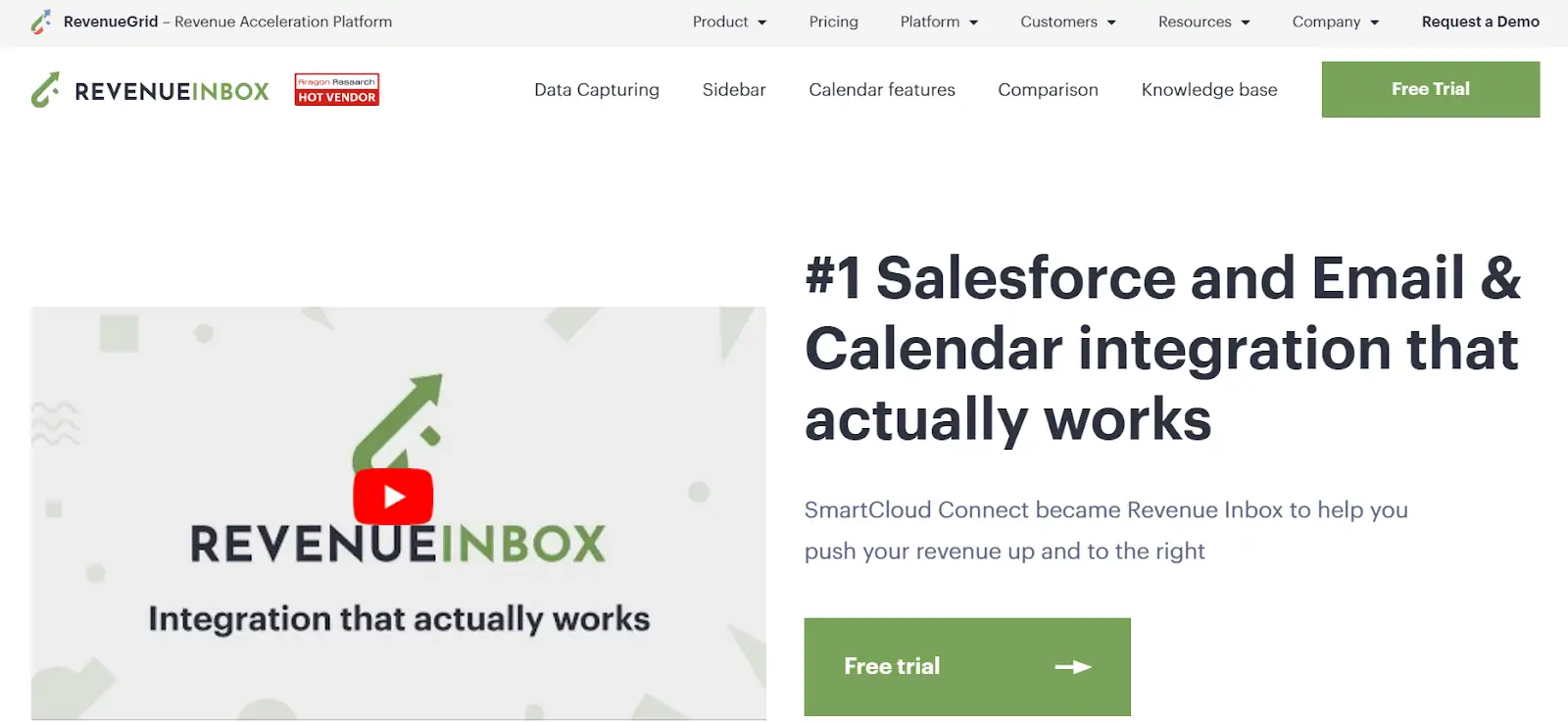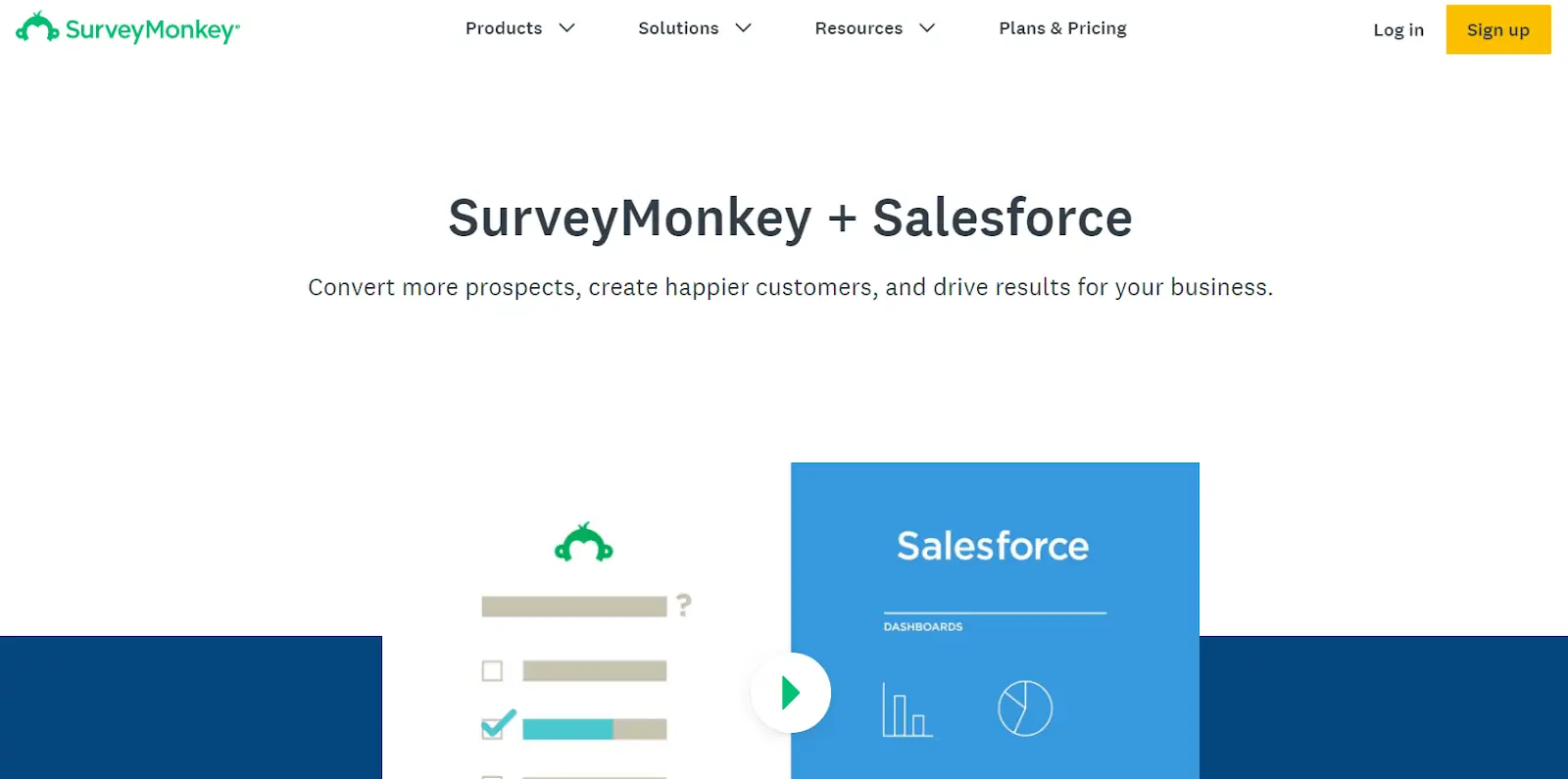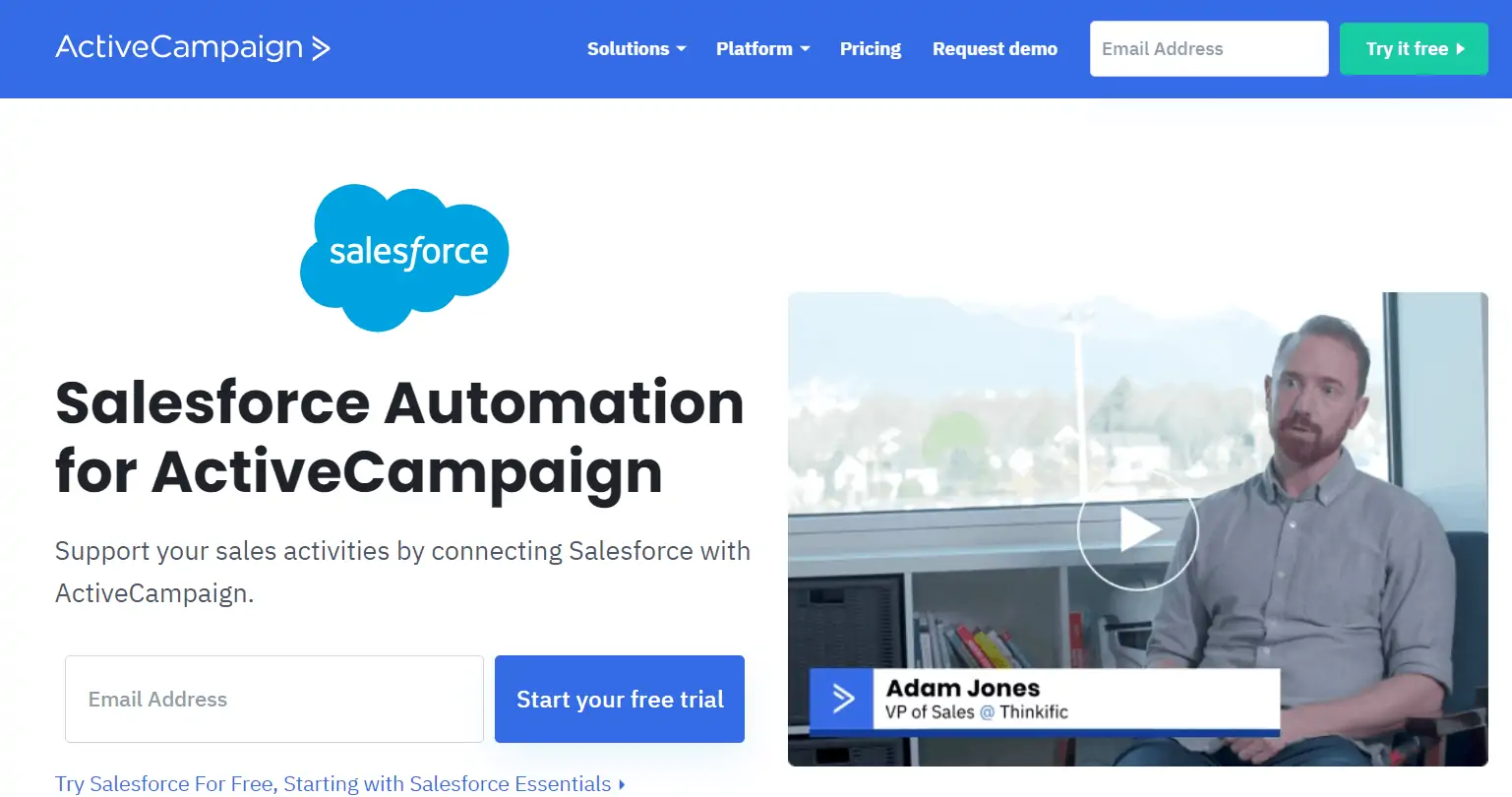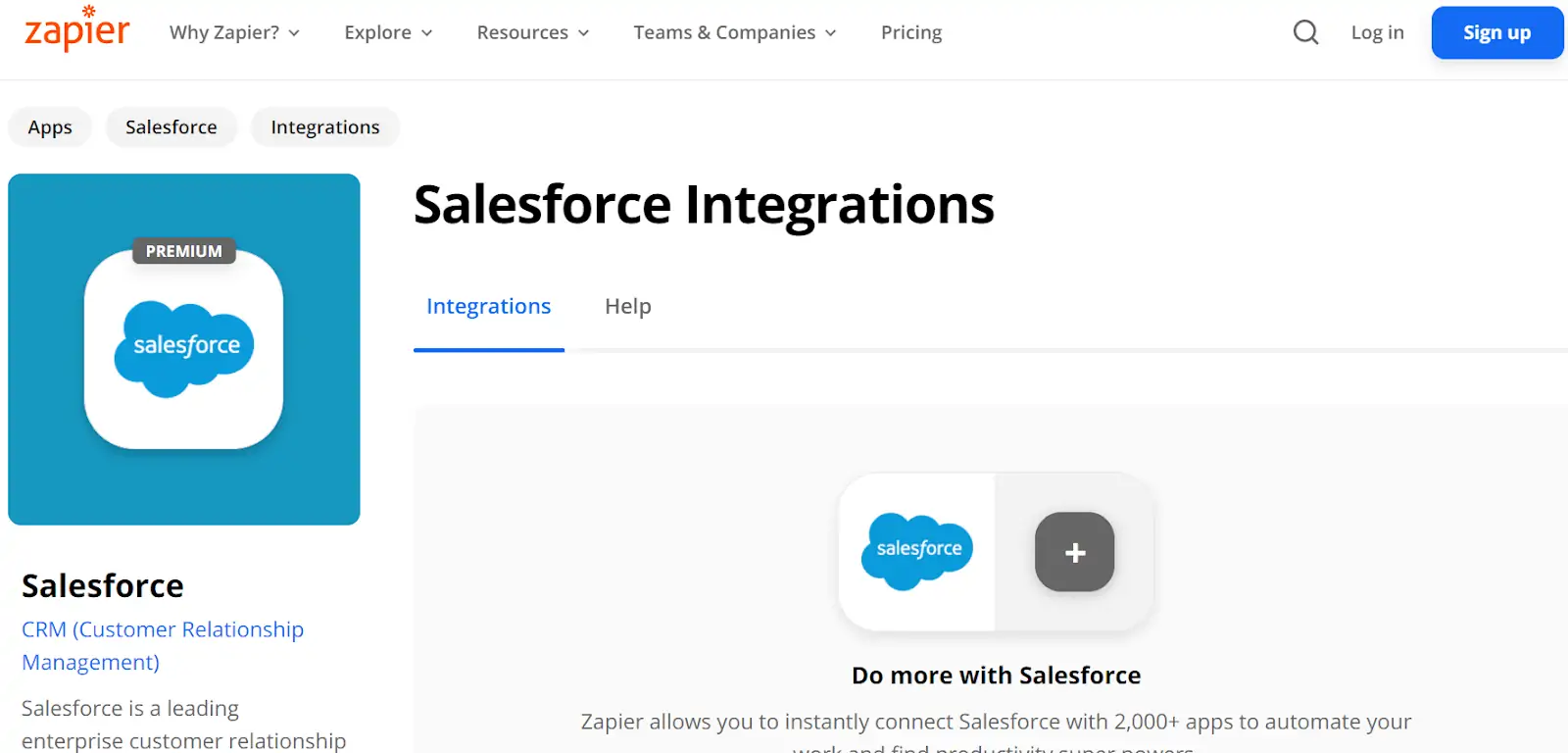In today’s data-driven sales landscape, finding the right Salesforce integration tools can feel overwhelming. With thousands of options available, sales teams often struggle to identify which solutions will truly connect their disconnected systems, automate manual workflows, and deliver the accurate data needed to drive revenue growth. If you’re feeling lost in the sea of integration options, you’re not alone.
The Salesforce AppExchange offers over 5,000 powerful tools to expand Salesforce’s capabilities and solve specific business challenges. From email marketing automation to customer service functionalities, lead generation tools to data integration platforms – the options are vast and varied. Understanding the Salesforce integration process and its benefits is crucial for making informed decisions about which tools to implement.
By selecting the right Salesforce integration tools for your specific needs, you can eliminate data silos, automate tedious tasks, and give your sales team more time to focus on what matters most: building relationships and closing deals. But choosing poorly can lead to wasted budget, implementation headaches, and disrupted workflows. It’s essential to understand the Salesforce automation tools available and how they can streamline your sales processes.
In this comprehensive guide, we’ll explore the most effective Salesforce integration tools available in 2025, helping you make confident decisions that will truly drive sales success. We’ll cover everything from what makes integration valuable to detailed evaluations of top tools and best practices for implementation.
What is Salesforce Integration and Why it Matters
Salesforce integration is the process of connecting Salesforce CRM with other applications, systems, and data sources to create a unified workflow and data environment. As your business grows, you’ll likely need solutions beyond Salesforce’s native capabilities – from email marketing and accounting to team collaboration and specialized analytics. Integration ensures these systems work together seamlessly, sharing data and automating processes across platforms.
Why does this matter? Consider the challenges of disconnected systems:
- Data silos: Information trapped in different systems leads to incomplete customer views and missed opportunities
- Manual data entry: Sales reps waste valuable selling time on administrative tasks
- Reporting inaccuracies: Forecasting and decision-making suffer when based on incomplete data
- Slow response times: Customer interactions are delayed when information isn’t readily available
Effective Salesforce integration addresses these challenges by creating a connected ecosystem where data flows automatically between systems. This delivers several critical benefits:
- Improved data accuracy: Eliminate duplicate entries and ensure consistent information across platforms
- Enhanced productivity: Automate routine tasks so sales teams can focus on high-value activities
- Better customer insights: Gain a complete 360-degree view of customer interactions and history
- Accelerated sales cycles: Remove friction points in the sales process through automation
- More reliable forecasting: Base predictions on complete, real-time data from all relevant systems
For sales operations leaders and revenue-focused organizations, proper Salesforce integration isn’t just a technical consideration—it’s a strategic imperative that directly impacts revenue outcomes and competitive advantage. Understanding the Salesforce integration tools and their role in this process is vital for success.
Types of Salesforce Integration Tools and Services
Salesforce integration tools come in various forms, each designed to address specific integration needs and use cases. Understanding these categories helps you identify which type of solution best fits your requirements.
| Integration Category | Description | Best For |
|---|---|---|
| iPaaS (Integration Platform as a Service) | Cloud-based platforms that connect applications and data sources with pre-built connectors and workflow automation | Organizations needing to connect multiple systems with minimal coding |
| ETL/ELT Tools | Solutions that Extract, Transform, and Load data between Salesforce and other systems | Data-intensive operations requiring sophisticated transformations |
| API Management Tools | Platforms for building, managing, and monitoring API connections | Organizations with developer resources needing customized integrations |
| Native Point Solutions | Purpose-built apps designed specifically for Salesforce integration | Teams needing plug-and-play solutions for specific use cases |
| Low-Code/No-Code Tools | Visual builders that enable integration without extensive programming | Business users who need to create integrations without IT support |
Salesforce integration tools connect Salesforce with other business systems for seamless data flow and unified operations. Key categories include middleware platforms (MuleSoft, Boomi, Jitterbit) for complex enterprise integration, automation and iPaaS tools (Zapier, Workato) for user-friendly, no-code automation, and ETL (Extract, Transform, Load) tools (Estuary Flow, Integrate.io) for efficient data migration. The Salesforce AppExchange also hosts many pre-built connectors and applications to extend Salesforce functionality.
Marketing automation integrations
Marketing automation integrations connect Salesforce with platforms that manage email campaigns, lead nurturing, content marketing, and other marketing activities. These integrations ensure that marketing and sales data remains synchronized, creating a seamless lead handoff process.
Key capabilities include:
- Bi-directional lead and contact synchronization
- Campaign performance tracking in Salesforce
- Lead scoring and qualification automation
- Personalized content delivery based on Salesforce data
For sales teams, marketing automation integrations provide visibility into prospect engagement before they become qualified leads, enabling more informed conversations and higher conversion rates.
Data integration and ETL tools
Data integration and ETL (Extract, Transform, Load) tools focus specifically on moving and transforming data between Salesforce and other systems. These tools are essential for organizations with complex data environments or those migrating from legacy systems.
These solutions excel at:
- Handling large data volumes with high performance
- Transforming data formats between different systems
- Maintaining data quality through validation and cleansing
- Creating scheduled or real-time data synchronization
Modern ETL tools for Salesforce often include pre-built connectors for popular databases, ERP systems, and other data sources, simplifying what was once a highly technical process. For sales operations, these tools ensure that critical business data is accurately reflected in Salesforce for reporting and decision-making.
Sales engagement and productivity tools
Sales engagement integrations connect Salesforce with tools that help sales representatives communicate with prospects, manage their activities, and increase their productivity. These integrations bring communication channels like email, phone, and messaging directly into the Salesforce workflow.
These tools typically offer:
- Email and calendar synchronization with Salesforce
- Activity tracking and automatic logging
- Sequence and cadence management for outreach
- Meeting scheduling and follow-up automation
- Call recording and transcription integrated with Salesforce records
For sales teams, these integrations eliminate the constant switching between applications and ensure that all customer interactions are properly documented in Salesforce without manual effort.
Contract and document management tools
Contract and document management integrations connect Salesforce with platforms that handle document creation, storage, e-signatures, and contract lifecycle management. These integrations streamline the often complex process of finalizing deals.
Key features include:
- Document generation using Salesforce data
- E-signature capture integrated with opportunity workflows
- Contract repository linked to Salesforce accounts and opportunities
- Automated approval workflows
- Contract renewal and expiration notifications
By integrating document processes with Salesforce, sales teams can accelerate deal closure, ensure compliance, and maintain a complete record of all agreements within the CRM.
Top 6 Salesforce integration tools to boost sales
Check out the top Salesforce integration tools that help boost sales to get inspired to find the sales tools you need.
1. Revenue Inbox: Salesforce and inbox integration tool
Overview: Developed by Revenue Grid, Revenue Inbox is one of the top-rated inbox integration tools in the Salesforce AppExchange. It allows you to synchronize emails, events, and tasks between your Salesforce CRM and Office 365, Outlook, and Gmail. Revenue Inbox is highly customizable, so you can configure it the way you want to make it sync well with your Salesforce.
Highlighted features:
- Data capture: Automatically capture and save all customer-related data from Office 365, Outlook, and Gmail to Salesforce.
- Email sidebar: View and update Salesforce data directly from your inbox in real time.
- Calendaring: Schedule meetings, invite leads to book appointments, and sync calendars easily.
- Sales dashboards: Track team activity, opportunity engagement, deals, and sales through comprehensive reports.
How to integrate: Revenue Inbox provides step-by-step tutorials for integrating the tool into Salesforce. Read these guides to learn more:
- How to Set Up Revenue Inbox for Salesforce and Gmail
- How to Set Up Revenue Inbox for Salesforce and MS Exchange or Office 365
2. Formstack
Cost: Starts from $249/month.
Overview: Formstack is an online form building and productivity tool that allows you to create custom forms, put them into digital documents, and collect e-signatures to streamline your workflow. The Formstack for Salesforce integration tool lets you access all of the Formstack capabilities and performs tasks right from your Salesforce account.
Highlighted features:
- Automate the process of collecting data and signing digital documents.
- Use automated rules to reduce repetitive tasks and save time for more important ones.
- Integrate Salesforce forms with many popular payment gateways like Stripe and Authorize.net.
- Support Salesforce drag-and-drop form builder, form templates, and powerful security.
How to integrate: You can integrate Formstack into your Salesforce from AppExchange. Read this official guide from Formstack to learn more.
3. SurveyMonkey
Cost: Contact SurveyMonkey for a quote.
Overview: SurveyMonkey is a top-notch online survey tool allowing you to create professional and stunning surveys for different purposes. The SurveyMonkey for Salesforce integration lets you create an automated workflow to send survey data to Salesforce so your sales reps can better understand customers and develop viable strategies to close deals with them.
Highlighted features:
- Set up triggers to automatically push data back to Salesforce.
- Analyze customer feedback without leaving Salesforce.
- Provide insightful reports to help your sales team make better decisions.
- View and manage all of your customer data in one place.
How to integrate: If you’re using the SurveyMonkey Enterprise plan, you can integrate it with Salesforce right within your SurveyMonkey account. Read this official tutorial from SurveyMonkey for more information.
4. ActiveCampaign Salesforce tool
Cost: Starting from $49 per month with 500 contacts.
Overview: ActiveCampaign allows you to automate marketing, sales, and support activities to create a better customer experience. The ActiveCampaign for Salesforce integration tool is two-way data synchronization between your ActiveCampaign account and your Salesforce account. Using this integration, you can nurture and qualify leads and create personalized follow-ups to turn them into repeat customers.
Highlighted features:
- Update and sync customer data between ActiveCampaign and Salesforce.
- Create follow-up emails with ActiveCampaign and send them to Salesforce leads.
- Create an automated lead nurturing flow for Salesforce leads.
- Customize scoring criteria and set them to automatically qualify leads.
How to integrate: You can integrate ActiveCampaign into your Salesforce from Salesforce AppExchange. Read this guide to learn how.
5. LinkedIn Sales Navigator
Cost: $134.99 per month for the Team plan. Contact LinkedIn for the Enterprise quote.
Overview: LinkedIn Sales Navigator allows you to get more information about your leads by accessing their LinkedIn profile directly within Salesforce. With those insights, you can create a clear picture of your cold prospects, understand their backgrounds/interests, and then develop an effective strategy to turn them into customers.
Highlighted features:
- Use LinkedIn data, insights, and actions to enhance your Salesforce experience.
- Research your existing leads with LinkedIn or use LinkedIn lead recommendations to find new leads.
- Perform several tasks on LinkedIn like sending connection requests and InMail messages without leaving Salesforce.
How to integrate: You can integrate LinkedIn with Salesforce from AppExchange, using API or a third-party integration tool like Zapier. Read this LinkedIn integration guide to learn more.
6. Zapier
Cost: Starts from $24.99 per month.
Overview: Zapier is a perfect solution if you want to integrate third-party apps (e.g., Unbounce, Airtable) that aren’t available on AppExchange into your Salesforce. Zapier allows you to access more than 2000 apps from your Salesforce account, connect with them, and build automated workflows to assist your sales team.
Highlighted features:
- Connect your Salesforce with Trello, Airtable, Jotform, and more.
- Send new leads, contacts, events, and other data among apps.
- Support triggers, actions, and searches to automate workflows.
How to integrate: You can integrate Zapier into Salesforce from either your Zapier account or AppExchange. Read this guide to learn more.
Why Revenue Grid is the Ideal Salesforce Integration Tool
Among the wide range of Salesforce integration tools available in 2025, Revenue Grid stands out as a comprehensive solution designed to optimize sales productivity, improve CRM adoption, and eliminate the inefficiencies caused by manual data entry. Unlike point solutions that solve only one aspect of integration, Revenue Grid provides a connected ecosystem tailored specifically to the needs of revenue-focused organizations.
Its flagship product, Revenue Inbox, offers seamless email and calendar integration with Salesforce, ensuring that sales representatives spend more time engaging with prospects and less time managing CRM updates. Combined with intelligent data capture and activity insights, Revenue Grid delivers a powerful advantage in creating complete customer visibility within Salesforce.
| Feature | Revenue Grid Advantage | Business Impact |
|---|---|---|
| Automatic Data Capture | Captures emails, meetings, and attachments directly into Salesforce | Saves reps 5+ hours per week and ensures complete CRM records |
| Two-Way Calendar Sync | Keeps personal and Salesforce calendars fully aligned | Prevents missed meetings and ensures accurate scheduling |
| Embedded Salesforce Sidebar | Allows users to access and update Salesforce within their inbox | Boosts Salesforce adoption by making CRM accessible where reps work |
| Meeting Scheduling | Enables prospects to book directly into reps’ calendars | Accelerates sales cycles by reducing back-and-forth scheduling |
| Activity Analytics | Provides dashboards to track engagement across teams | Improves forecasting accuracy with complete activity data |
What sets Revenue Grid apart from other Salesforce integration tools is its ability to combine automation, analytics, and user-friendly integration into a single platform. Instead of adding complexity, it simplifies CRM adoption, ensures accurate data capture, and gives sales leaders the insights they need to make informed decisions. For organizations seeking a Salesforce integration solution that directly drives revenue outcomes, Revenue Grid is the clear choice.
Wrapping up
There are thousands of Salesforce integration tools available, making it challenging to pick ones that help solve your specific problem and achieve your goals.
The six tools above are a great way to start. Spend time learning about each tool and then take a free trial or get a demo to get an overview of how it works and find out if it will be beneficial to your sales team.
Discover all the benefits of Revenue Inbox – the best
Salesforce email integration
Frequently Asked Questions
1. What makes Revenue Grid different from other Salesforce integration tools?
Revenue Grid offers a complete ecosystem that combines email and calendar integration, automatic data capture, scheduling, and analytics in one platform. This makes it more comprehensive than tools that focus on only one integration feature.
2. How does Revenue Grid improve sales productivity?
By automating routine CRM updates like email logging and calendar sync, Revenue Grid saves sales reps several hours each week, allowing them to focus more on selling activities.
3. Does Revenue Grid help with Salesforce adoption?
Yes. With its embedded Salesforce sidebar in email inboxes, Revenue Grid makes CRM features accessible where sales teams already work, which significantly boosts adoption.
4. Can Revenue Grid prevent scheduling conflicts?
Absolutely. Its two-way calendar sync and direct meeting scheduling ensure calendars stay aligned and prevent double-bookings or missed appointments.
5. How does Revenue Grid support sales forecasting?
Revenue Grid provides detailed activity analytics that capture all customer interactions. This data gives sales leaders more accurate insights for forecasting and pipeline management.






